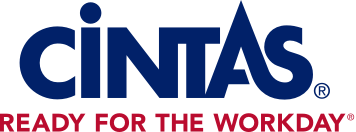Ongoing Demand for Scrub Uniform Cleanliness
The ubiquitous scrubs worn by healthcare workers ranging from surgical staff to physician assistants to nurses have come under new scrutiny in light of the COVID-19 pandemic. Questions swirl over the cleanliness of scrubs being worn outside the healthcare setting, how they should be laundered, and which healthcare workers should have access to hospital-laundered scrubs and which should have to manage their own laundering.
Increased demand for scrubs and the need for professional laundering has led to scrub shortages nationwide, as more frontline workers use the garments and some scrub vendors struggle to meet demand. Brigham & Women’s Hospital in Boston has seen a 70% increased demand for scrubs on weekdays and 300% on weekends, resulting in its leaders instructing frontline workers to use gloves, gowns and masks, and “to only wear scrubs if they are required to provide safe patient care.”1
A recent survey shows Americans worry about exposure to germs from uniformed workers. Medical workers in scrubs registers the highest percent of Americans saying they’d be “very concerned” about being in proximity to them while shopping or taking public transportation (Source: The New Standard of Clean and What it Means for Business). In fact, the American Medical Association published its COVID-19 guide entitled Caring for health care workers during crisis: Creating a resilient organization. In it, the AMA cites access to scrubs as “a personal safety/basic need for psychosocial support during a crisis, along with on-site showers and toiletries.
As frontline workers walk the line between caring for patients and caring for themselves and their families, some hospitals have stepped up by providing comprehensive scrub rental programs that make clean, industrial-laundered scrubs available to more employees than ever. Their decision to do so can help support staff morale and overall engagement.
Although it may appear cost effective to use home laundering, when the cost of surgical site infections and infections carried into the home that could result in illness and lost employee time are considered, it is not cost effective.3
Hygienically cleaned scrubs can play a role in helping to reduce the spread of germs. According to the Centers for Disease Control, “Through a combination of soil removal, pathogen removal, and pathogen inactivation, contaminated laundry can be rendered hygienically clean.4 We already know that 49% of healthcare workers don’t wash their uniforms at the recommended temperature to remove harmful pathogens,5 70% of nurses’ uniforms test positive for MRSA,6 and MRSA and other dangerous bacteria can test positive on scrub uniforms 48 hours after a healthcare worker’s shift ends.5
Hygienically cleaned scrubs both support a healthcare facility’s bottom line and its efforts at infection control.
Healthcare facilities often consider these factors in evaluating a professional scrub uniform rental program:
AVAILABILITY
How does the vendor dispense clean scrub uniforms? Is access easy, 24/7 and convenient for the staff?
LAUNDERING PROCESS
What is the vendor’s laundering process? How are dirty linens and uniforms kept separate from clean linens and uniforms on the facility’s property?
INVENTORY CONTROL
How does the vendor monitor inventory levels? Do they have software that helps to reduce hoarding and shortages?
FACILITY IMAGE
Can front line workers mix sizes for optimum fit? Are the garments durable and crisp-looking? Can they be provided in the appropriate colors?
REFERENCES
How satisfied are other customers with a vendor’s ability to stock and launder scrub uniforms?
The discussions around scrub uniform cleanliness isn’t going away anytime soon, and with the public more aware of viral and bacterial transmission, more people are watching to see what healthcare systems do.
As Forbes reported in April, “Yet, in this era of coronavirus there may be something a bit unsettling about seeing medical
professionals donning scrubs in public.”7 Even when there was no novel coronavirus around, 10 years ago, patient advocate and former Lieutenant Governor of New York, Betsy McCaughey put it rather bluntly: ‘You see them everywhere - nurses, doctors and medical technicians in scrubs or lab coats. They shop in them take buses and trains in them, go to restaurants in them, and wear them home. What you can’t see on these garments are the
bacteria [pathogens] that could kill you.’”7
1 Boston Business Journal: https://www.bizjournals.com/boston/news/2020/04/23/top-hospitals-are-facing-a-new-supply-shortage.html
2 Journal of the American Medical Association: https://jamanetwork.com/journals/jama/fullarticle/2763136
3 Association of Registered Nurses (AORN) Journal, Jan 2014, p. 143.
4 Centers for Disease Control: https://www.cdc.gov/infectioncontrol/guidelines/environmental/background/laundry.html
5 Infection Control Today: https://www.infectioncontroltoday.com/view/home-laundering-scrubs-qa-trsa-ceo-joseph-ricci
6 The National Center for Biotechnology Information: http://ow.ly/y1h330o8wDb
7 Wall Street Journal: https://www.wsj.com/articles/SB12313724597196264
